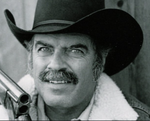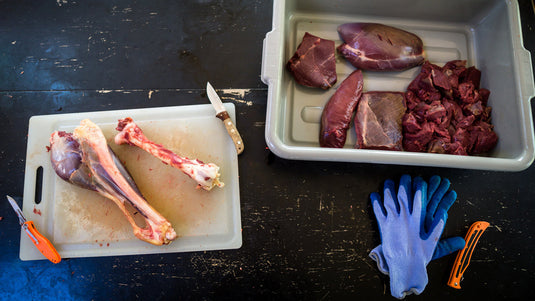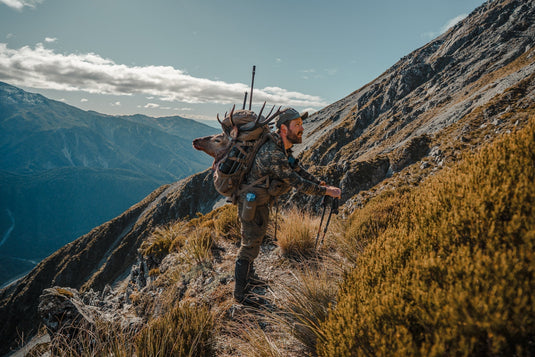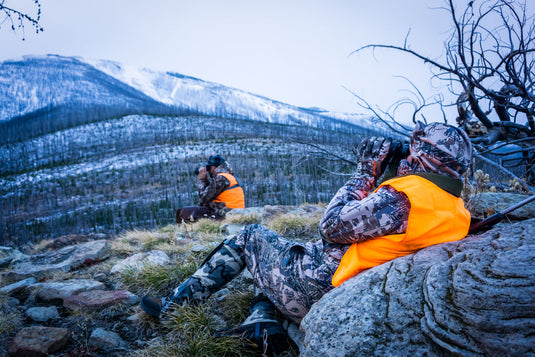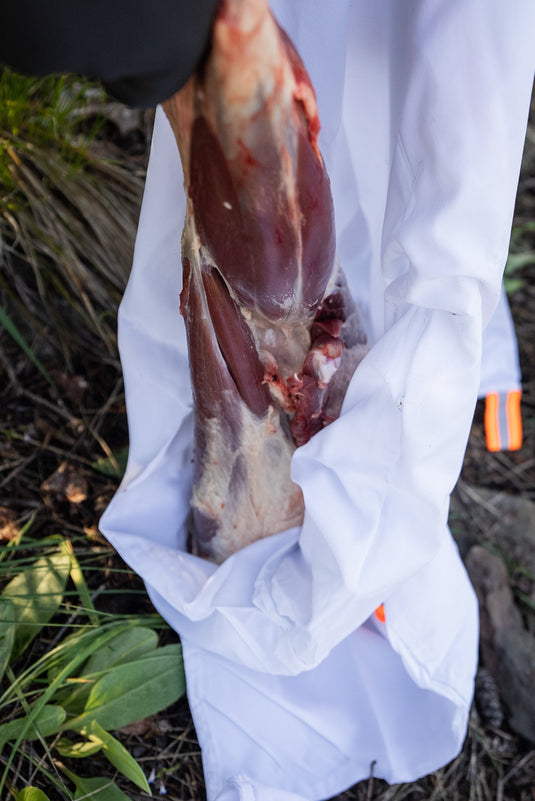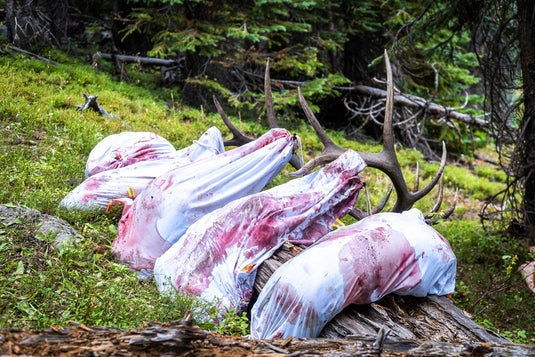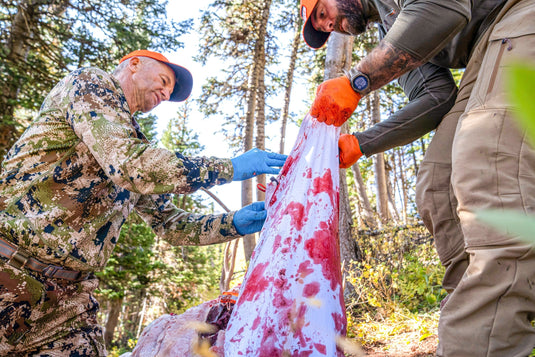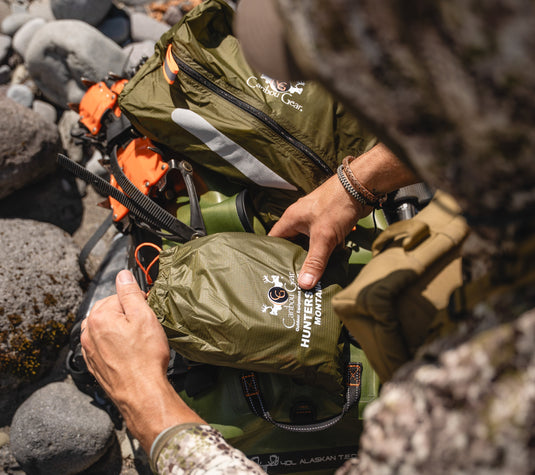A good way to start a lively discussion among hunters and non-hunters is to bring up the subject of bear baiting. Some perceive this practice to be unethical. To best address this issue, consider the many tenets of fair chase as adopted by the Boone and Crockett Club which, by the way, is a major conservation organization as well as a record-keeping association for North American trophy class animals. According to B&C, baiting bears does not constitute unfair chase. In other words, baited bears are eligible for inclusion into this prestigious award program.
Detractors of the practice claim it’s unethical to lure bears out of the woods to a bait where a hunter is waiting. Opinions are all over the board — but it’s all a matter of personal choice — if, of course, it’s not against the law. If bears were like deer and elk that live in herds, and offering decent opportunities or encounters it would be a different scenario. But the bruins are low to the ground, fairly quiet as they pad along, solitary, (except for a sow with cubs), and difficult to see in the brushy and timbered environments they prefer, unless their habitat includes much open country. Their incredible noses and decent hearing make it difficult to hunt them one on one in thick environments or dense forests. That being the case, the best way a hunter can stand a chance of seeing one in those places is to entice them to a spot where they can at least be seen. In order for wildlife biologists to manage bears there needs to be a way to hunt them to attain appropriate harvest rates. Again, this all depends on the laws of the state. Having said that, many hunters believe it’s far more fair to hunt them in the woods without baiting despite the challenges and difficulty of seeing one.

Sometimes the people opposed to baiting are laymen and members of the public, and sometimes they’re state biologists who personally have an issue with baiting. They often have the power and personality within their agency to make baiting illegal. Nowadays, ballot box management is commonly used by the public to vote against hunt strategies or hunts for specific species. In Colorado, for example, a state where bear baiting was once popular, the public went to the ballot boxes in 1992 and voted to outlaw spring bear hunting, hound hunting and baiting (Amendment 10 A-10) by a two-thirds majority vote. Some other western states, notably in the northwest, enacted similar laws through ballot box management.
Bottom line, baiting is a divisive issue among hunters. Fact is, every aspect of hunting has its detractors and supporters among hunters. For example, some traditional bowhunters look down on those who use compound bows; some compound bowhunters aren’t happy with those who use crossbows, some gun hunters are against long- range shooting, and on and on. It’s all really a matter of personal preference.
But for those who live in states where bear hunting over bait is legal, or intend to try it for the first time, here are some basics.
IS BEAR BAITING EASY? Yes, and no. It’s easy if you’re hunting with an outfitter and he does all the work. All you need to do is show up, get in the stand and wait for a bear to approach the bait. It’s a totally different story if you’re doing a DIY hunt, both physically and understanding the plethora of rules which include actually setting up bait stations. Baiting rules often dictate how far your bait can be from a trail, waterway, road or dwelling or other baits. Just getting a permit for a bait site on public land can be tough.
Most importantly, many folks don’t appreciate the physical effort required to establish and maintain a bait site. It’s not just a matter of tossing a few dozen stale donuts or a box of cookies on the ground. To do it correctly you need to provide enough smelly bait to attract bears from long distances — and keep them there. Depending on the bait location from the nearest vehicle access, baits can be cumbersome and challenging to transport to the site. Some hunters carry baits in with back packs or with game carts or even wheelbarrows. Since the idea is to not only attract bears but to encourage them to hang around for awhile, and return — you’ll need plenty of stinky stuff at the bait site.
Many years ago when Colorado still allowed baiting I hunted with an outfitter on the Grand Mesa. He was able to drive a pickup to his bait sites where he could dump a 55 gallon barrel of bait which was exceedingly odoriferous, which meant it stunk like heck. It worked, however, because I shot my first- ever bear over bait. It was a medium sized blonde bear which showed up a few minutes before shooting light. It was a quiet afternoon when the bear appeared. I heard it softly padding along and then a “woof.” The bear very slowly approached the bait and looked around. It was his last look.

HOW LONG SHOULD YOU WAIT? When bears leave the den they’re famished. They’re normally nocturnal but in the spring they’ll forage on and off in the daytime. Having said that, the last couple hours of the day are always prime. You can opt to sit in the stand all day but your best chances are always just before dark. You should plan to remain in the stand until the last minute of shooting light. That means, of course, that you may be walking out of the woods in the dark, which can unnerve some hunters since that’s when bears are moving about, especially around baited stands.
I’ve done many baited hunts in Canada, chiefly in Alberta and Manitoba, and always with outfitters. (Canadian wildlife laws prohibit nonresidents doing DIY hunts). In every case the hunter would be taken to the stand around 2 or 3 pm. Since days are long in the spring, that could mean a long sit. I enjoyed those hunts because I was able to fish in the mornings. In fact, when you think about it, those spring bear hunts are the only ones where you can sleep in in the morning and not have to get up at ungodly hours!
WHAT KINDS OF BAIT? The idea is to quickly attract the bear with enough scent at the baited area to allow it to feed and keep coming back for more. This requires a fair volume of bait. Laws may govern the kinds of bait which are legal. For example, you may not be allowed to use parts of game fish or animals. Rules may also dictate the amount of bait that can be used as well as the size of containers in which it can be placed.
I’ve heard people say a bear’s nose is so good it can smell a kernel of corn a half mile away. Well, this might be an exaggeration but you get the picture. I’ve seen baits composed of cookies, popcorn, pastries, meat, fish, chocolate, all sorts of goodies. Some enterprising hunters get bait from coffee shops that have expired pastries, especially donuts. If you catch non-game fish like carp or suckers they’d make an excellent addition to the bait pile.
In Canada it’s common for outfitters to hang a beaver carcass from a rope tied between two trees. They buy them from trappers who skin the beavers and freeze the carcasses until bear season comes along. The hanging beaver is also used to help determine the size of the bear. It’s hung so that if a bear can reach it by standing up it’s definite a shooter. Bears absolutely love beaver carcasses, by the way. Some hunters also put honey or maple syrup directly on the bait or smear it on trees. Aromatics such as anise can also be sprayed on vegetation.
I know one Wyoming outfitter who uses an ingenious method to ration the bait to bears so they can nab only one piece at a time, thus preventing bears from sitting there and gobbling up most or all of the bait. He does this by cutting a square hole about 8 inches by 8 inches on the side of a 55 gallon drum. The hole is close to the ground. The bear has to reach in, grab a chunk and typically walk with it away from the barrel and then return for more.
HUNTING STRATEGIES. Once the bait station is established, treat it so a bear can be there any time. When it’s time to approach the area and sit in the stand do it quietly. Instead of having someone drop you off from an ATV or pickup, walk in and ease close to the bait where you can see it from a distance. More than once I’ve seen bears at the baits as I was approaching.
When you’re in the stand, arrange all your gear so you won’t be making noise when a bear approaches. Have your gun or bow ready so you can shoot with very little movement.
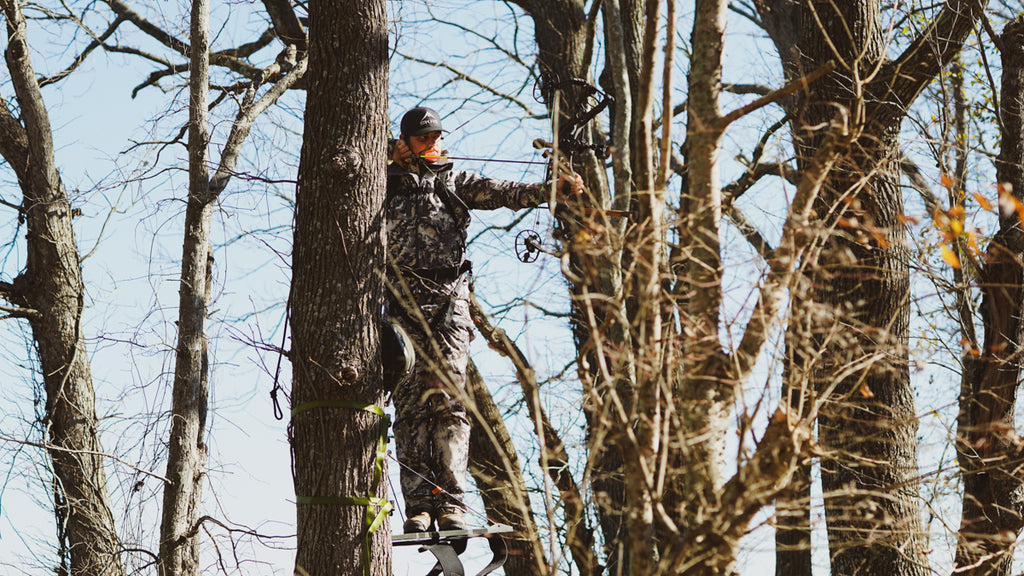
If you see a small bear and it’s acting nervous at the bait or takes a quick mouthful and leaves, that’s a sign there’s a big bear around and the little guy isn’t interested in an encounter. Don’t be staring only at the bait. Check the surrounding landscape frequently. Bears may approach very slowly and stop often. They might be difficult to see in the underbrush. When a bear comes in and it’s a shooter, wait a while to be sure it isn’t a sow with cubs. They’ll be following her fairly closely. Sows with cubs are illegal to hunt.
HOW WARY ARE BEARS AROUND BAITS? I’ve been sitting on baits where bears were around but never showed themselves because they knew something wasn’t “right.” Many years ago I hunted New Brunswick, a province in eastern Canada. My buddies and I went up several years in a row to hunt bears over baits and fish for Atlantic salmon. Most of us never got a bear though we’d see parts of them as they moved through the brush. The baits were adequate, the stands were placed considering wind direction, but the bears were so wary they wouldn’t approach.
On the other hand, I’ve been on hunts in western Canada where the bears were so bold they’d actually climb your ladder and look you in the eye a few feet away. More than once a bear actually licked my boot. These were always small bears, but there were times when I had my finger on the trigger ready to shoot. On some of those hunts I saw multiple bears every afternoon.
I once interviewed legendary Fred Bear who has been called the “Father of Bowhunting.” When I asked what his favorite animal to hunt, he said: ”Bears, because they’re so unpredictable.”
I couldn’t agree more.


